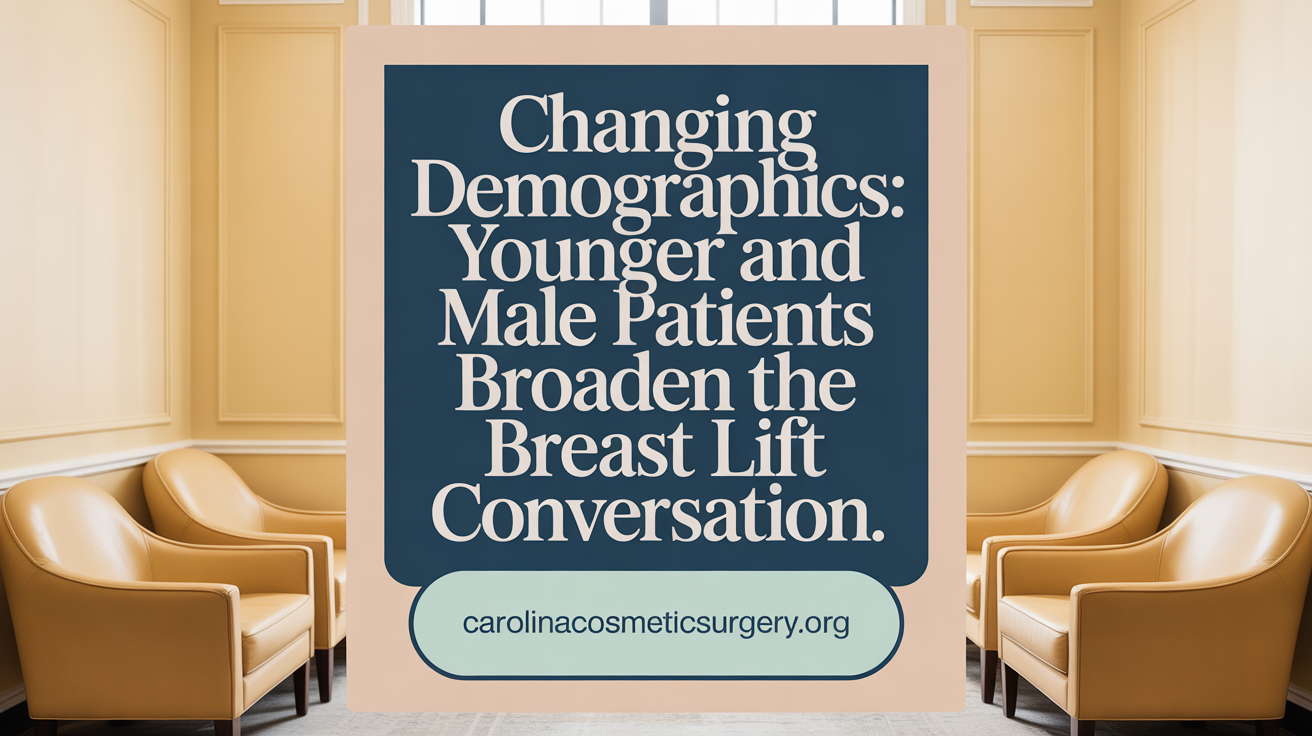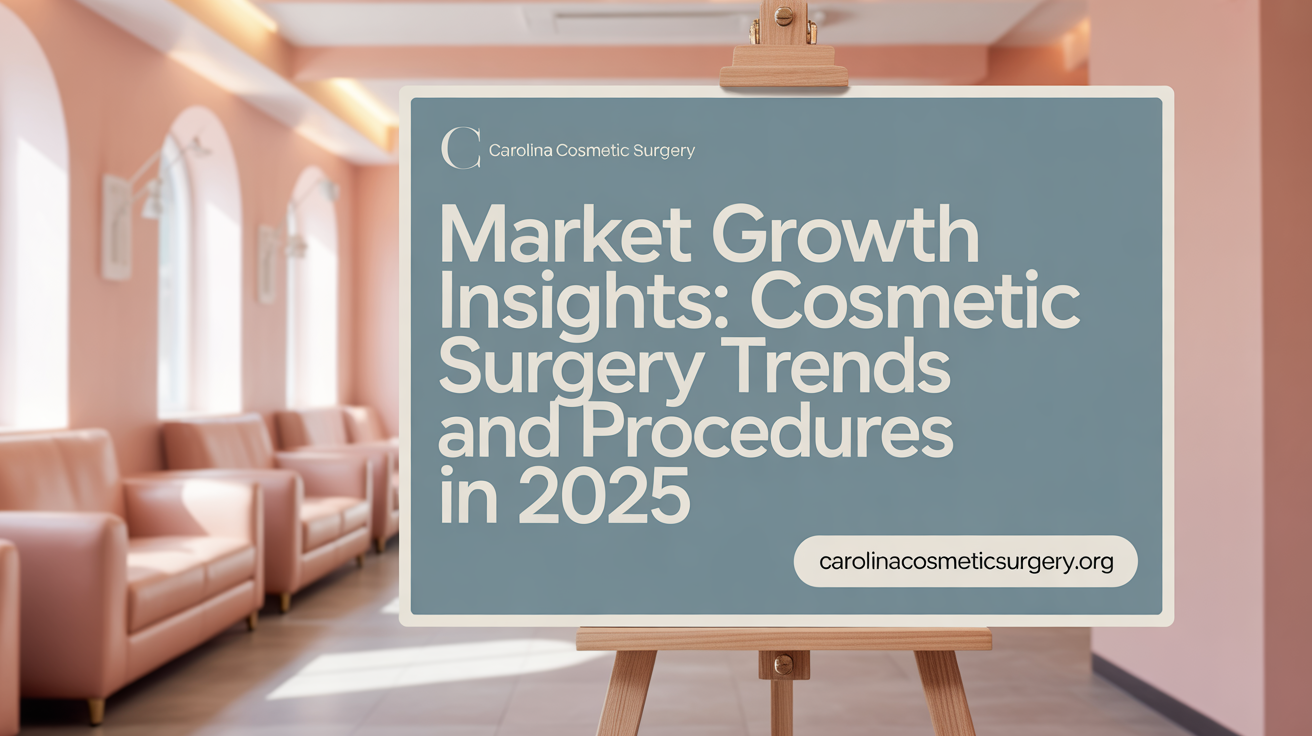Understanding the Breast Lift Landscape in 2025
As breast lift procedures continue to grow in popularity, 2025 promises to be a year of significant evolution shaped by advances in technology, shifting patient preferences, and expanding demographics. This overview delves into the latest statistics and projections, highlighting key trends in surgical techniques, patient characteristics, and market dynamics influencing the field of mastopexy. From refined surgical methods emphasizing natural aesthetics to changing patient profiles motivated by aging and body contouring goals, we provide a comprehensive look at what to expect in breast lift procedures in 2025.
Current Popularity and Demographics of Breast Lift Procedures

What are the patient demographics and characteristics associated with breast lift surgeries in 2025?
In 2025, breast lift procedures continue to attract a diverse range of patients, primarily women who are looking to improve the shape and firmness of their breasts. Many women seeking this surgery are middle-aged, especially those in the 40-54 and 55-69 age groups, who are experiencing sagging and aging of breast tissue. These patients often present with concerns about drooping nipples, stretched skin, or asymmetries.
The typical candidate is generally in good health, maintains a stable weight, and does not smoke, as these factors reduce the risk of complications. There is a noticeable trend toward younger women opting for smaller, less invasive lifts aimed at achieving a natural appearance with quicker recovery times.
Many patients are motivated by the desire to restore youthful contours, correct sagging caused by factors like aging or weight fluctuations, and improve their overall aesthetic confidence. The preference for natural-looking results is high, with many choosing procedures like fat transfer or smaller implants to complement the lift.
Overall, the patient profile in 2025 is characterized by a focus on personalized, minimally invasive, and natural outcomes, reflecting broader societal trends toward subtle beauty enhancements and long-lasting results.
Statistical Overview and Market Analysis of Breast Lift Procedures

What statistical data and market analysis are available for breast lift procedures leading into 2025?
The market for breast lift procedures, also known as mastopexy, demonstrates a steady upward trend with consistent growth over recent years. As of 2023, nearly 150,000 such surgeries were performed worldwide, with a 7% increase from the previous year, reflecting ongoing demand. Since 2000, breast lift surgeries have surged by approximately 89%, totaling about 99,614 procedures at that time.
Projections for 2024 and 2025 suggest continued growth at a compound annual growth rate (CAGR) of roughly 5.7% to 5.69%. Industry forecasts estimate that by 2034, the market could reach approximately USD 3.25 billion. This growth is driven by an aging population seeking rejuvenation, advances in minimally invasive surgical techniques, and increased societal acceptance of aesthetic procedures.
Regionally, North America remains dominant due to its high demand and advanced healthcare infrastructure. However, Asia-Pacific is expected to be the fastest-growing market, leveraging expanding healthcare access and rising middle-class populations interested in cosmetic enhancements.
Market segmentation includes various techniques such as traditional surgical lifts and minimally invasive procedures, with key industry players like Allergan and Johnson & Johnson holding significant market shares. Industry reports provide detailed regional and procedural forecasts, highlighting the importance of technological innovations and regulatory approvals in shaping the future landscape.
Growth Trends and Future Forecast for Breast Lift Surgeries

What is the projected growth and future forecast for breast lift surgeries in 2025?
Breast lift surgeries continue to gain popularity, with a strong upward trajectory forecasted for the coming years. In 2024, these procedures rose significantly, reflecting broader societal shifts towards natural and body-positive aesthetics.
Looking ahead, the global market for mastopexy, or breast lift procedures, is expected to grow at a compound annual growth rate (CAGR) of approximately 6.10% from 2025 through 2030. This steady increase underscores continued demand driven by technological advances and changing patient preferences.
Full mastopexy remains a dominant technique, holding about 41% of the market share, praised for its effective reshaping and lifting capabilities. As innovations such as better imaging, AI-assisted planning, and minimally invasive methods improve outcomes, more patients are inclined to opt for these surgeries.
Trend influences also include a rising focus on maintaining natural look and feel, with many women preferring smaller, more proportionate lifts. The popularity of fat transfer techniques, which offer a subtler enhancement, complements this trend.
Furthermore, exceptional outcomes and satisfaction rates—such as the 95% satisfaction reported in recent surveys—boost patient confidence and expand the pool of prospective surgical candidates.
In summary, the nexus of technological progress, patient preferences for natural aesthetics, and increased awareness suggests that breast lift surgeries will continue to grow robustly through 2025 and beyond, contributing to a vibrant and evolving market.
Evolving Preferences and Patient Priorities in 2025

Shift toward natural-looking results
In 2025, there is a clear trend toward achieving more natural-looking aesthetic results. Patients are increasingly opting for smaller implants or choosing fat transfer procedures instead of traditional implants to enhance their breasts subtly. This approach aligns with the growing desire for results that blend seamlessly with a person's natural anatomy.
Preference for smaller implants or fat transfer
Many patients now favor smaller, more proportionate breast sizes, often decreasing from the previous standard of 350-400 cc to around 250-300 cc or even smaller. Fat transfer is gaining popularity as it offers a natural alternative that enhances breast volume without the use of artificial implants. This procedure provides a more subtle, personalized enhancement that appeals to those seeking a less invasive and more harmonious outcome.
Patient motivations and satisfaction rates
Patients are motivated by a desire for realistic, long-lasting results that require minimal recovery time. The push for natural aesthetics is reflected in high satisfaction rates, with about 90% of patients expressing contentment with their outcomes. The focus is now on creating results that are virtually undetectable and that improve self-confidence while respecting individual beauty preferences.
Consequences of pandemic and lifestyle factors
The pandemic has influenced these shifting preferences, with many prioritizing health, safety, and natural beauty. The use of advanced imaging and personalized surgical planning, including 3D visualization, ensures patients can see realistic outcomes before surgery. Additionally, lifestyle factors such as the use of medications like Ozempic for weight management have increased interest in post-weight loss body procedures, further emphasizing individualized, natural results and overall wellness.
Technological Innovations and Surgical Advances Impacting Breast Lifts

What are the upcoming trends and technological advances in breast lift procedures for 2025?
In 2025, breast lift surgeries are expected to focus heavily on creating more natural-looking results with smaller, more precise implants and advanced techniques. Patients increasingly prefer subtle enhancements that preserve or improve breast shape and firmness without unnecessary volume increases.
One of the most significant technological advances is the use of personalized implants. These are crafted using 3D printing technology, allowing surgeons to design implants that perfectly match a patient's unique anatomy. Silicone sizing, combined with 3D imaging, helps visualize how different implant options will look before surgery, aiding in more tailored outcomes.
AI and 3D imaging play a critical role in surgical planning. These tools enable surgeons to simulate various outcomes, helping patients make informed decisions. They also improve surgical precision, reducing the risk of asymmetry or complications.
Minimally invasive techniques are gaining popularity. Robotic-assisted surgeries use refined suturing methods and smaller incisions, which lead to less scarring, reduced pain, and shorter recovery periods. Surgeons can now perform complex maneuvers with enhanced accuracy.
Additionally, hybrid procedures combining breast lifts with augmentation or fat transfer are on the rise. These approaches provide more comprehensive results, addressing shape, volume, and texture in one surgery. Fat transfer, in particular, offers a natural alternative to implants, appealing to patients seeking subtle results.
Overall, innovations in technology and surgical methods focus on maximizing natural aesthetics, improving surgical precision, enhancing patient comfort, and enabling quicker healing. The future of breast lifting is poised to be safer, more personalized, and more minimally invasive, aligning with patient preferences for natural, long-lasting results.
Broader Industry Trends Influencing Breast Lift Procedures in 2025

Rising diversity in patient populations
In recent years, the demographic landscape of individuals opting for breast lifts has become more diverse. Notably, there has been a 35% increase in male patients seeking these procedures, reflecting a broader acceptance of body image choices among men. Additionally, younger adults are increasingly interested in breast lifting and corrective procedures, indicating a shift toward earlier intervention. This expanded diversity highlights the importance of personalized surgical approaches tailored to varied patient needs and aesthetic desires.
Increased focus on safety and recovery protocols
Advancements in surgical technology and safety protocols have transformed the breast lift process. Modern techniques, including computer-assisted planning, have increased procedure precision by 30%, while reducing operative times by approximately 25%. These innovations contribute to safer surgeries with fewer complications, which have decreased by 50%. Furthermore, enhanced pre-operative evaluations and new pain management strategies have cut healing times by up to 40%, making recovery quicker and more comfortable for patients.
Trends toward regenerative aesthetics and non-surgical options
The aesthetic industry is witnessing a strong shift toward minimally invasive and regenerative treatments. Growth in non-surgical options such as fat transfer is evident, with a rising preference among patients for subtle, natural results. In 2025, there is a notable focus on regenerative methods like stem cell and exosome therapies, expected to grow by 40%. These treatments aim to promote tissue rejuvenation and improve aesthetic outcomes without invasive surgery.
Changing lifestyle and demographic influences
Lifestyle factors and demographic changes continue to influence trends in breast aesthetics. The ongoing decrease in smoking rates and an increase in patients with obesity or diabetes undergoing procedures like top surgery signal a shift towards healthier, more diverse patient profiles. Additionally, younger patients and those seeking natural-looking results prefer smaller implants or fat transfers, aligning with societal trends favoring subtle enhancements and long-lasting natural aesthetics.
| Trend Area | Observed Changes | Impact on Breast Lift Procedures | Additional Notes |
|---|---|---|---|
| Diversity in patients | 35% rise in male, younger adults | Broader eligibility and tailored approaches | Emphasizes personalization |
| Safety protocols | 50% reduction in complications | Increased trust and volume | Technology and training improvements |
| Non-surgical treatments | 45% surge in minimally invasive opts | Complementary to surgical options | Focus on natural results |
| Lifestyle/demographic shifts | Decreases in smoking, rising obesity | Influence on procedure choices | Reflect wider health trends |
Looking Ahead: The Future of Breast Lifts in 2025 and Beyond
The landscape of breast lift procedures in 2025 is shaped by a convergence of advanced technology, evolving patient preferences, and expanding demographics. With rising demand fueled by an aging but health-conscious population and improved surgical methods emphasizing natural results and enhanced safety, the future appears promising for mastopexy. Market growth forecasts alongside innovations such as AI-assisted planning and personalized implants suggest continued expansion and refinement of techniques. As patients increasingly seek subtle rejuvenation and holistic body contouring solutions, breast lifts will remain a prominent choice within cosmetic surgery, adapting dynamically to trends and patient needs in the years ahead.
References
- Plastic Surgery Statistics 2024 - American Society of Plastic Surgeons
- Plastic Surgery Statistics | Autism Therapy Services
- Top Plastic Surgery Trends for 2025 - Dr Ali
- Trends in Top Surgery Patient Characteristics, Wound ... - PubMed
- Breast Augmentation Trends 2025: Natural Is In
- U.S. Plastic Surgery Trends 2025 - The Most Sought-After Procedures
- Plastic Surgeons Predict The Top Aesthetic Procedures For 2025
- Which (5) U.S. Regions Lead the Charge in Plastic Surgery ... - WMA
